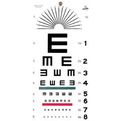The subject is a bridge over a river near my home that has had a bridge over it for over two hundred years. This bridge is perhaps a hundred years or so old. The reason I wanted to post this photo is to suggest that when you take photos, consider taking some in B & W. Of course color photos can be edited and converted to B & W but the detail is really watered down. I live in a great old New England town with a lot of history so I will post others in B & W at another time. Smile...
|
Some time ago I did some black and white photos in high resolution that I was going to use as masters for screen printing images. The images were converted to line drawings and then became useful for making silk screens . As I was looking through them again I was surprised to see that the B & W had considerably more detail than the same photo in color. Although both images were digital, the color failed to reveal the depth and impact that B & W had. Neither had the latitude that real film has but they are pretty good.
The subject is a bridge over a river near my home that has had a bridge over it for over two hundred years. This bridge is perhaps a hundred years or so old. The reason I wanted to post this photo is to suggest that when you take photos, consider taking some in B & W. Of course color photos can be edited and converted to B & W but the detail is really watered down. I live in a great old New England town with a lot of history so I will post others in B & W at another time. Smile...
0 Comments
 This patent is interesting in that I am not sure how it received a patent at all. This made the patent list in 1980 and if it had been 100 years earlier, it would have made sense. According to the patent law, the invention for a utility patent " must be new and novel". Called the 'Velocipede Railway Bike" it performs an obvious function to ride on rails designed for trains. I get it! But the bike is not new or novel, and the wheels to fit the track is not new, so what makes this a protected idea? The patent is also replete with a lot of drawings that also seem obvious, but they don't issues patents for drawing proficiency. If someone sees something that I missed, please let me know. All aboard here. It seems that the friendly chipmunks that live on my porch, or at least frolic there, were getting too fat and having trouble getting into the Habitrail that I made. (Check an earlier post). So, I made a box out of hardware cloth to hold peanuts. Since they can see and smell them, but can't get in ,they get frantic and do get some exercise trying to get to them. This puzzle box is fun to watch and no chipmunks were hurt in this video process. I did give them some peanuts after the fun. Aw nuts!
 Many of us think of corn on the cob when summer finally arrives each year. And, as this is such a common expectation, it may seem strange to see an entry on this everyday item. Bu this corn is different! It is called Mirai and it is the sweetest hybrid corn ever developed. I only have a small raised bed with this variety but I will still get 30 ears of great corn this year. This variety was developed at Twin Garden Farms in Harvard Illinois more than ten years ago. The only reason that it failed to catch on was the fact that it is so tender that machine picking damaged the corn. So, it had to be hand picked. But it did catch on in Japan where it is hand picked and it is a well known and loved corn. It is frequently eaten raw and used as a desert. That is sweet! But farmers here are learning how to use machines to pick this great variety and it will show up in markets in the near future. Meanwhile, check your local farm stand as they may already be selling it. The photo below shows the tassels turning brown. When the kernels at the end are milky, its time to pick. Two more days maybe...  No, it is not the eye chart that was patented in 1938, but contact lenses. It really has been over 70 years that contact lenses have been in regular use. But that is not the beginning of the story. In 1508 Leonardo Da Vinci wrote in his Manual D, Codex of the Eye , about submerging the eye in a bowl of water to improve vision. Not practical but a good observation. It was 1887 when F E Muller, a glassblower, developed the first hand blown contact lenses. It is said that they could only be worn for 2 hours at a time. And then this patent from 1938 was a huge improvement in lens size and functionality. Although still made of glass, they were the forerunner of the modern contact lens. See it at Google Patents here. |
Archives
June 2021
Categories
All
|


 RSS Feed
RSS Feed
